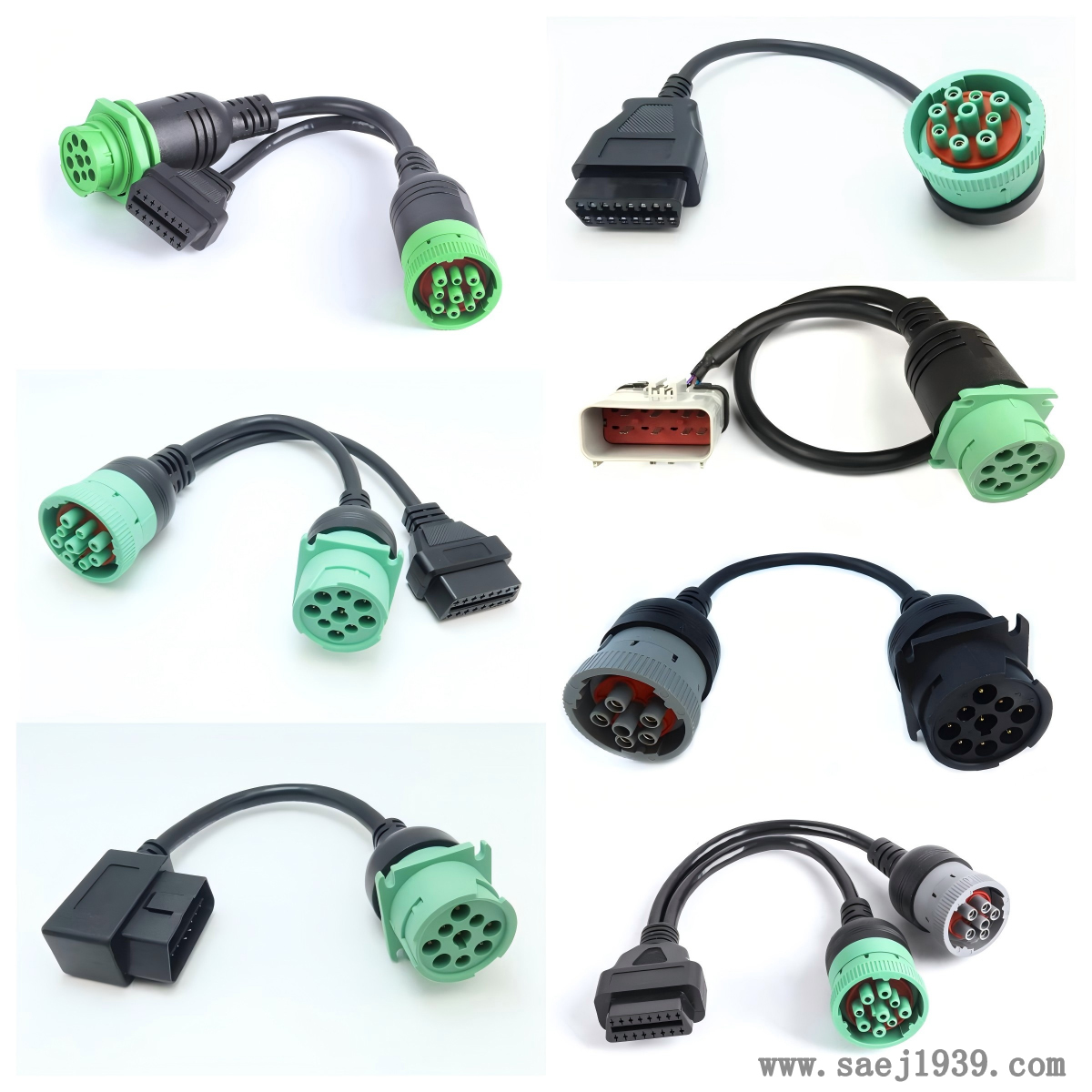The SAE J1939 protocol is a CAN bus communication protocol developed for commercial vehicles (such as heavy-duty trucks, buses, and other road vehicles, as well as engineering machinery, agricultural machinery, rail locomotives, ships, and other non road vehicles and equipment). It is based on the CAN 2.0B protocol and aims to address compatibility issues between different engine manufacturers and ECU manufacturers. When purchasing J1939 cables, there are several key considerations that cannot be ignored, considering the particularity and application scenarios of this protocol.

1、 Clearly define the application scenario
Firstly, it is necessary to clarify which specific scenario the cable will be used for, such as engine control, transmission communication, or axle status monitoring. Different application scenarios may have different performance requirements for cables, so it is important to be targeted when selecting.
2、 Cable specifications and models
J1939 cables typically have specific specifications and models that are closely linked to protocol requirements. When purchasing, it is important to ensure that the cross-sectional area, length, and other parameters of the cable meet the usage requirements to avoid waste or safety hazards caused by being too large or too small. Meanwhile, it is important to choose cable models that comply with the J1939 standard to ensure compatibility with other devices in the system.
3、 Material and Quality Certification
The material of the cable directly affects its performance and lifespan. J1939 cables typically use shielded twisted pair cables, which help reduce electromagnetic interference and improve communication quality. When purchasing, attention should be paid to the core material of the cable (such as copper core, aluminum core), insulation layer material (such as rubber insulation, PVC sheath), etc., to ensure that they meet the requirements of the application scenario. In addition, it is necessary to choose cable products with quality certifications (such as ISO, CE, CCC, etc.) to ensure that the product quality meets relevant standards and regulations.
4、 Conductivity and Insulation Performance
Good conductivity is the foundation for stable transmission of current in cables. When purchasing, attention should be paid to the conductivity of the cable to ensure that it can meet the application requirements. At the same time, the insulation and protective layers of the cable should have good insulation and protective properties to prevent safety hazards such as short circuits and leakage.
5、 Connectors and protective covers
When selecting J1939 cables, the quality and performance of the connectors should also be considered. The connector should match the model and specifications of the cable to ensure reliable connection and stable communication. In addition, in situations where cable protection is required, appropriate cable protective covers should be selected for protection to improve the durability and safety of the cable.
6、 Supplier reputation and after-sales service
Choosing cable suppliers with good reputation and qualifications is the key to ensuring product quality and after-sales service.
7、 Price and cost-effectiveness
Compare multiple suppliers and choose cable products with high cost-effectiveness. Not only should price factors be considered, but also multiple aspects such as product quality, performance, and after-sales service should be comprehensively considered to ensure that cable products that meet usage needs and have high cost-effectiveness are selected.
In summary, when purchasing J1939 cables, attention should be paid to multiple aspects, including application scenarios, specifications and models, material and quality certification, conductivity and insulation performance, connectors and protective covers, supplier reputation and after-sales service, as well as price and cost-effectiveness. By considering these factors comprehensively, it can be ensured that suitable and high-quality J1939 cable products are selected to meet the needs of commercial vehicle communication systems.
We chat